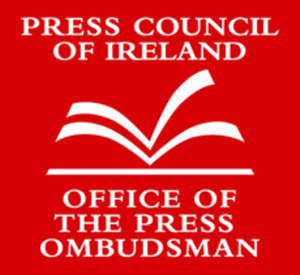There was a time when Galway was known primarily for its merchant trading, its traditional musical and creative community and its thriving fishing industry. But in recent decades, the City of Tribes has charted a new course, becoming an unexpected yet vibrant hub for tech innovation in Ireland’s western seaboard.
So, how did a city that was once better known for its arts festivals and its music scene transform into a cradle for cutting-edge technology?
The answer lies partly in Galway’s innate resilience and adaptability, alongside the city’s long history of international trading and global outlook which continued even after its golden era of merchant trading ended. With a centuries-long aptitude for looking beyond its shores, undoubtedly the 1990s were a pivotal time in Galway’s development but this decade of change was made possible by decisions which were set into motion when the Celtic Tiger was just a mere cub.
Economic focus
To truly understand how a largely agricultural and overlooked region at the edge of the continent became home to some of the biggest players in technology, digital business and innovation, we need to look at where it all started.
From 1922 to 1972, post-independence Ireland’s fiscal policy was decidedly conservative, operating a predominantly agricultural-based economy. This conservative fiscal strategy and economic focus would change in the 1970s, with Ireland’s entrance into the European Union in 1972 coinciding with a dramatic change in spending patterns and initiating a change towards a knowledge-based economy.
The drift away from a conservative traditional economy was later accelerated in 1980, when the EU agreed to waive State-aid waver rules for Ireland, resulting in a ‘special rate’ 10 per cent tax on manufacturing. From 1996 to 2003, Ireland would introduce a phased reduction in its standard corporate tax rate, dropping from 40 per cent down to 12.5 per cent.
Educated workforce
In 1956, there were just 7,200 third-level students in Ireland, a figure which accounted for just 0.0002 per cent of the Irish population. Shortly after, Ireland would undergo a golden era of learning development, with free schooling being introduced in 1966, the development of further education institutes focusing on technology in the 1970s, the abolition of college fees in the 1990s and the introduction of education grants such as SUSI to name a few.
This renaissance of learning, while marred with some low points, was revolutionary for the Irish people. By 1998, the number of third-level students in Ireland rose to 112,200, a rise of 1,500 per cent compared to 1956.
The ‘Digital legacy’
Galway is now an established global hub for a range of leading businesses in the manufacturing, technology and digital industry, but the city’s origin as a haven for the information technology industry began in 1971 with US computer manufacturer, Digital Equipment Corporation (DEC ).
It was the first technology company to come to Galway, with DEC choosing to establish its first hardware manufacturing base in Mervue because of the ‘availability of an English-speaking workforce, a favourable tax policy, a local university, and the anticipated entry of Ireland into the EEC’.
Over three decades, DEC would play an integral role in highlighting Galway’s potential as a production hub, leading to the pivotal growth of manufacturing and production activity in Galway during the 1990s, with DEC’s legacy attributed as being the foundations on which today’s industry is built.
Fifty years of innovation
With Ireland’s ‘Celtic Tiger’ roaring to life in the 1990s, multinational companies started looking beyond Dublin’s borders. Galway, with its rich talent pool fed by NUI Galway (now University of Galway ) and GMIT (now Atlantic Technological University ), was ripe for investment. The educational institutions weren’t just churning out graduates; they were cultivating minds steeped in problem-solving, critical thinking, and a healthy dose of west-of-Ireland ingenuity. Having spent decades cultivating educational programmes and courses to cater to the multinational corporations which had a local campus, Galwegians and the global companies which call the city home have entered into a form of a symbiotic, mutually beneficial relationship.
MedTech giants like Boston Scientific and Medtronic set up shop, drawn by not just the talent but Galway’s quality of life. As these companies grew, they seeded an ecosystem of startups, spin-offs, and innovative SMEs, creating a ripple effect that transformed the local economy.
Indigenous entrepreneurs
But it wasn’t just foreign direct investment doing the heavy lifting. Galway’s entrepreneurs, many returning from stints abroad, brought fresh ideas and bold ambitions. They found a city ready to support them, with co-working spaces sprouting up alongside tech incubators and accelerator programmes. This has further evolved with time, with today’s indigenous entrepreneurs no longer having to leave Ireland to bring their ambitions and ideas to life.
Galway’s growth may originally stem from the introduction of multinational industry bigwigs but the future tycoons of trade in Galway are likely to come from somewhere closer to home, possibly even from our own families.
Shaping the future
In the end, Galway didn’t so much transform as evolve, guided by the same forces that shaped it over centuries: a spirit of adventure, an openness to the world, and an unyielding sense of community. And as the tech tide continues to rise, Galway stands not as a city that followed the wave, but one that helped shape it.

